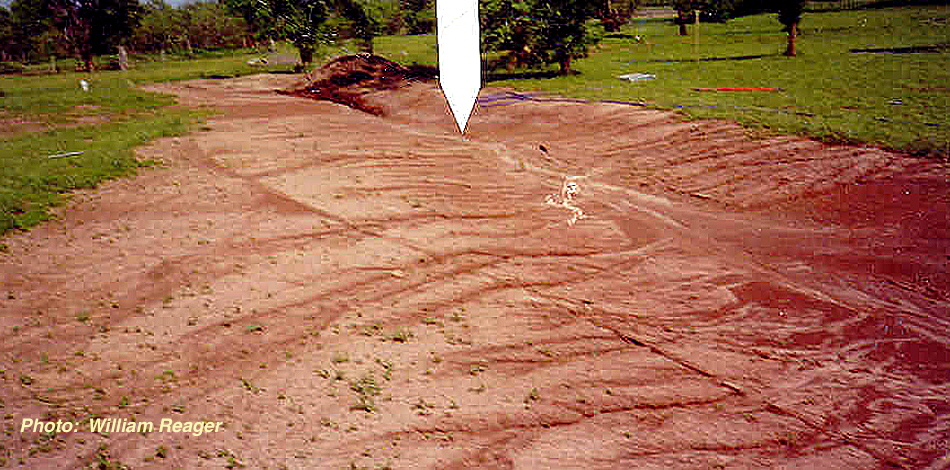File:
<description.htm> <Home>
SITE DESCRIPTION
Sedgwick County, Southeastern Kansas The value of this site is indicated by the low energy
geology of shallow sea sediment covered by loess or flood muds flowing over a
very flat area where there was insufficient energy to BREAK quartz. The U. S. Geological Survey has already
established a relative date for the area adjacent to the site at a
minimum of 10,000 years old but most likely older than 35,000 years and
possibly This site is at the divide between two large (for
Kansas) rivers on what seems to be an old riverbed that is more protected
from erosion by the clay. There is more chert material North of here and
higher loess dunes covering the Wellington in spots that have not eroded
away. It is at the feathered edge of a flat plain and this is why the rocks
have been exposed in the surrounding fields at slightly lower elevations, but
not long enough to account for the total erosion. The rocks exposed by the farmer's
pan breaker have a little less erosion and are sharper edged but are still
too dull to cut flesh. According to the Geologists there was about 2000 feet
of Wellington Formation that has been removed by erosion before the McPherson
covered the area. The tools and footprint showing traces of footgear was
between these formations covered either loess or flood mud. |
